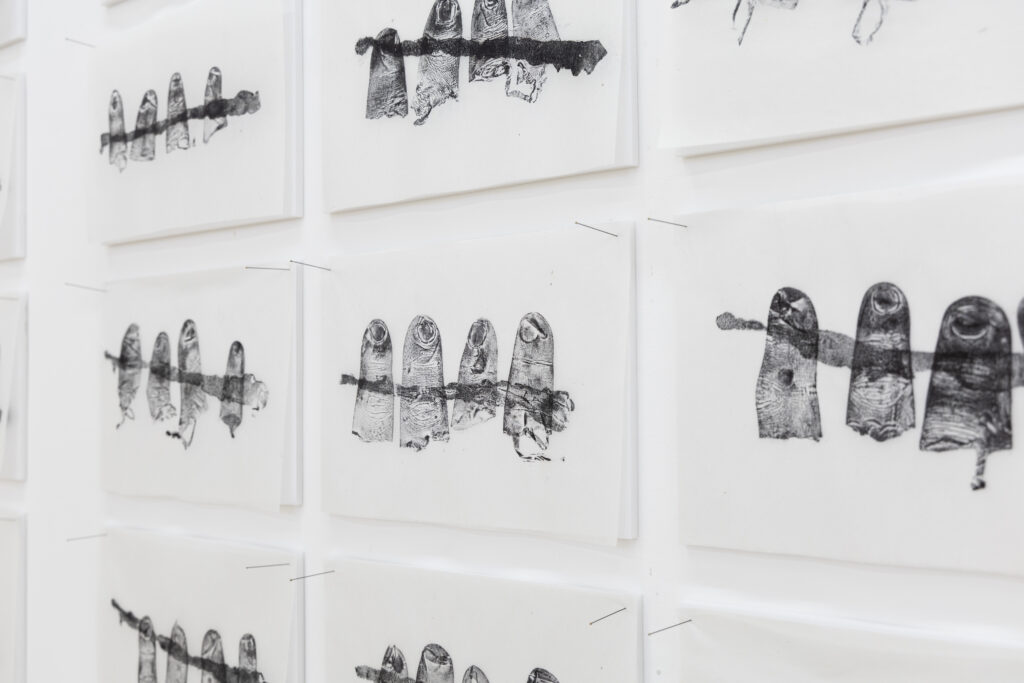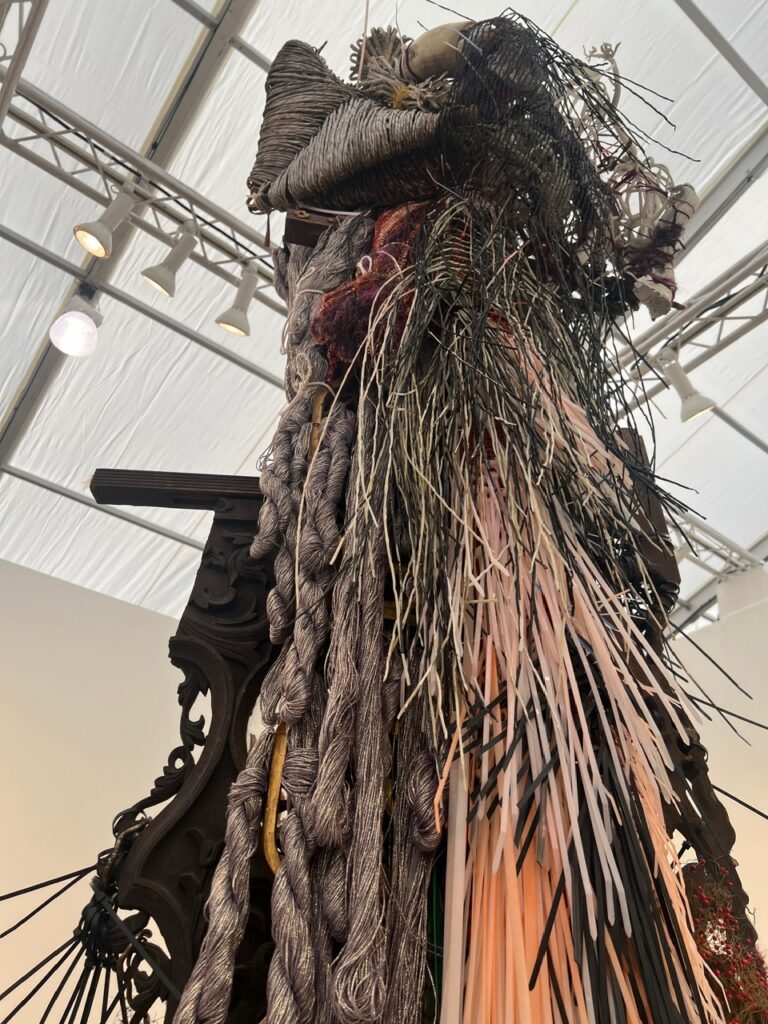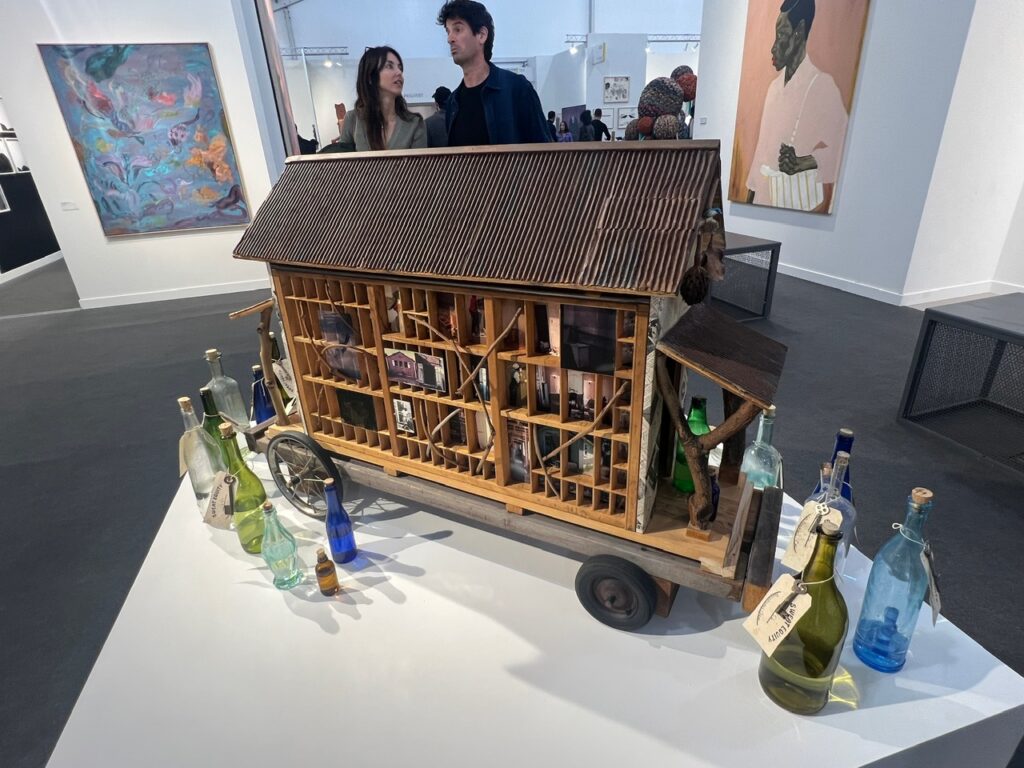Frieze Art Week, Frieze art parties, Frieze art fair…yes, when LA Frieze’s up, it becomes a hot art party. At this year’s Barker Hangar spectacular, there were some absolutely stunning works, some solidly commercial fare, some weird and wild pieces, and even a collection of works made from recycled materials – I applaud the effort, but for the cost, is a spray-painted mattress really something one would purchase?
But that’s a quibble. This is the place to discover fresh takes never seen before; classics, like the marvelous Terry Allen installation, or the gorgeous, delicate, found-materials weaving of El Anatsui, and the grand spectacle of a certified, high-end art scene.
Nancy Kay Turner has already written an earlier review published here that delves into her favorite pieces and a bit of Frieze history besides, so my approach is simply to show you works divided into the categories that I experienced them:
Wonderful and Why?
The titles of each section alone should serve to be a bit illuminating, and the visuals will likely tell you why images were placed in specific places. Beyond this somewhat silly but honestly fitting breakdown, the enormous fair — which featured more than 95 galleries — displayed a large number of textile and bead works, art made from found objects, fascinating pop art riffs, the aforementioned recycled material pieces, and some stand-out miniatures among its collections.
Wonderful!
From crazy-good mixed media miniatures displayed in two separate gallery booths…the hot violet creation with mini TV screens represented both wonderful and wow…
to the aforementioned wonder of El Anatsui…
to the ethereal lovliness of a work by Tomas Saraceno at Tanya Bonakdar Gallery…
to a lush gold mosaic and even lusher impressionist flowers and a moving take on personal lonliness…
…there was plenty of wonderful to go around.
A room solely devoted to Shepherd Fairey…
terrifying but beautiful apocalyptic images related to climate change by J. Homer French…
lush mixed media paintings, large scale sculptures, including both freestandng – some created from tiny fruit, some digital and wall art – well, this was all a visual feast.
Why?
So, you can paint bronze sculptures to look like Amazon boxes, but, why would you want to? Most people thought it was a joke, and the art was real boxes. If Art Basel had its banana, LA could have it’s Amazon deliveries.
Also, you can create a very cool sculpture made of old cds, but up close, unfortunately, they still look like cds, just in a sinuously lovely shape. And then there were the basketballs. Pretty sure they were real basketballs, possibly taken from my neighbor’s roof.
Also a why for me, given the well-heeled crowd attending the fair, was there an intermittant sprinkle of social commentary that wasn’t quite pointed enough to ruffle any feathers or raise any eyebrows or consciousness?
Then there were the rose quartz sculptures. I love rose quartz. I love sculpture. But, why?
And finally, even though it was a cool walk-through, why was there a very expensive Swiss watchmaker creating their watches in a large corner of the fair? Yes, the craftsmanship was artful. Yes, it was fascinating to watch an engraver at work. But it rang a loud bell of excess …
…that contrasted quite a bit with some very spiritual and lovely gongs in one near by booth, and those aforementioned bits of commentary-related art.
All in all, Frieze is a more than worthy contender in the ever-growing LA art fair sweepstakes. So next year, put on your best faux fur so you won’t literally freeze in the blasts of air conditioning throughout Barker Hangar, and enjoy the hot art scene. Doubtlessly there will be plenty of wonderful, some werid, and also some of those “why’s.” We will have to wait and see.
- Genie Davis, photos – Genie Davis



























































































































